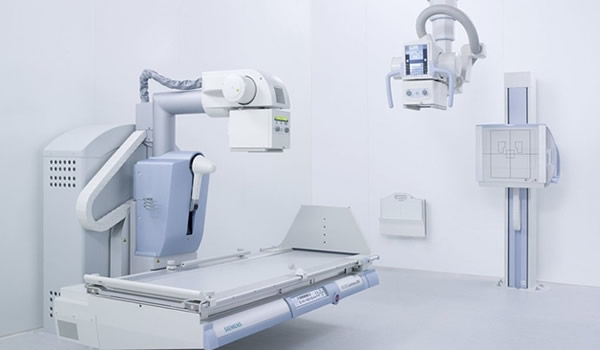Chronic Obstructive Pulmonary Disease (COPD) is a progressive respiratory disorder that limits airflow and reduces quality of life. Globally, COPD is the third leading cause of death, and Asia bears the heaviest burden due to high smoking prevalence, indoor biomass fuel use, and severe air pollution. This article explores the epidemiology of COPD in Asia, its causes and risk factors, symptoms, diagnosis, treatment options, and strategies for prevention and long-term care.

The Burden of COPD in Asia
- Global statistics: Over 390 million people are affected by COPD worldwide.
- Asian burden: China and India together account for nearly half of global COPD cases.
- Mortality: COPD is responsible for millions of premature deaths annually in Asia.
- Economic cost: Lost productivity and healthcare spending on COPD are major challenges for Asian economies.
Causes and Risk Factors
1. Tobacco Smoking
- Primary risk factor, especially in China, India, and Indonesia.
- Passive smoking also contributes significantly in households.
2. Indoor Air Pollution
- Biomass fuels (wood, coal, crop residue) used for cooking and heating in rural Asia.
- Women disproportionately affected due to household exposure.
3. Outdoor Pollution
- Rapid urbanization has worsened air quality in Asian cities.
- Particulate matter (PM2.5, PM10) strongly linked to COPD.
4. Occupational Hazards
- Dust, chemical fumes, and industrial pollutants in workplaces.
5. Infections and Other Risks
- Childhood respiratory infections increase COPD risk later in life.
- Genetic deficiency (Alpha-1 antitrypsin deficiency) rare but present.
Symptoms of COPD
- Persistent cough with mucus production.
- Shortness of breath, especially during physical activity.
- Wheezing and chest tightness.
- Frequent respiratory infections.
- Fatigue and weight loss in advanced stages.
COPD symptoms are often mistaken for “normal aging,” leading to late diagnosis.
Diagnosis of COPD
- Spirometry: Gold standard, measures airflow limitation.
- Chest X-ray/CT scans: Detect emphysema and rule out other lung conditions.
- Blood tests: Assess oxygen and carbon dioxide levels.
- Six-minute walk test: Measures exercise tolerance.

COPD Stages
- Mild (Stage I): Minimal symptoms, occasional shortness of breath.
- Moderate (Stage II): Increased cough and breathlessness, early exacerbations.
- Severe (Stage III): Worsening symptoms, significant activity limitation.
- Very Severe (Stage IV): Respiratory failure and frequent hospitalizations.
Treatment Approaches
1. Lifestyle and Risk Factor Management
- Smoking cessation: Most effective intervention.
- Pollution reduction: Use of clean cooking fuels, air purifiers, masks in polluted areas.
- Exercise and pulmonary rehabilitation: Improves endurance and lung function.
2. Medications
- Bronchodilators: Short-acting (SABA, SAMA) and long-acting (LABA, LAMA).
- Inhaled corticosteroids (ICS): For frequent exacerbations.
- Combination inhalers: LABA + LAMA or LABA + ICS for better control.
- Oral medications: Theophylline, roflumilast in select cases.
- Antibiotics and antivirals: For treating respiratory infections.
3. Oxygen Therapy
- Long-term oxygen therapy for advanced COPD with low oxygen levels.
4. Surgical Options
- Lung volume reduction surgery (LVRS).
- Lung transplantation in end-stage cases.
Daily Care and Patient Management
- Inhaler technique training to ensure proper drug delivery.
- Regular vaccinations (influenza, pneumococcal) to prevent infections.
- Nutritional support for weight maintenance.
- Psychological support: COPD often linked with depression and anxiety.
- Self-management plans: Patients monitor symptoms and seek early care during exacerbations.
Prevention Strategies in Asia
- Tobacco Control Stronger anti-smoking laws and taxation. Public awareness campaigns.
- Air Quality Improvement Policies to reduce industrial emissions. Transition to clean cooking fuels in rural areas.
- Workplace Safety Regulations Protective equipment in factories and mines. Regular health checks for at-risk workers.
- Community Screening Programs Early detection of COPD in high-risk groups.
Regional Insights
- China: Largest COPD population, driven by smoking and pollution.
- India: Heavy biomass fuel use, especially among rural women.
- Japan & South Korea: Lower prevalence due to stricter tobacco control, but aging population increases risk.
- Southeast Asia: Rising COPD prevalence with industrialization and smoking culture.

Future Directions
- Digital health tools: Smart inhalers with adherence monitoring.
- AI-based early detection: Spirometry apps and imaging analysis.
- New biologic drugs: Targeting inflammation and immune pathways.
- Telemedicine: Expanding COPD care to rural and underserved areas.
Conclusion
COPD is a growing epidemic in Asia, fueled by smoking, pollution, and lifestyle changes. While incurable, COPD progression can be slowed, and quality of life improved through prevention, timely diagnosis, lifestyle modifications, and modern therapies.
The future of COPD care in Asia lies in comprehensive prevention policies, access to effective inhalers and oxygen therapy, and adoption of digital and AI-driven healthcare solutions.
COPD Asia, chronic obstructive pulmonary disease, smoking COPD Asia, COPD treatment Asia